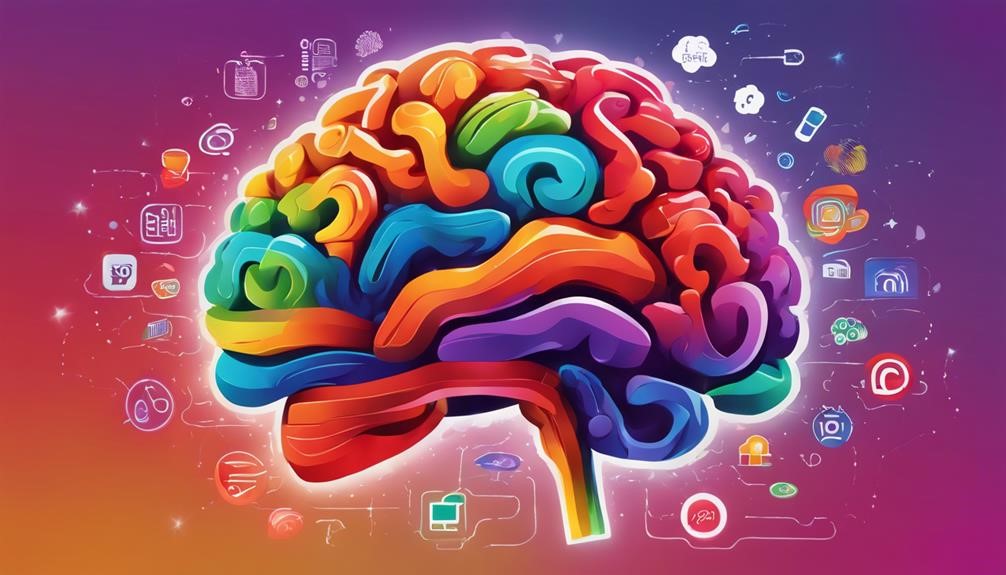In the competitive landscape of marketing and branding, understanding and implementing the psychology of colors is pivotal. Colors do more than make designs attractive; they communicate values, evoke emotions, and can also significantly influence consumer decisions. This comprehensive guide delves deep into the psychology of colors in branding, exploring how strategic color choices can transform brand perception and enhance market positioning.
The Science Behind Color Psychology
Color psychology studies how hues can influence human behavior as well as emotional responses. When applied to branding, color psychology provides a powerful tool to communicate with potential customers without words. The psychology of colors in branding is not a new concept but has become increasingly sophisticated in an era where brands vie for attention in a saturated market.
Emotional and Psychological Responses to Colors
Each color can trigger specific feelings and associations:
Red is often associated with energy, passion, and also urgency. It is frequently used in call-to-action buttons and sale banners to stimulate quick responses.
Blue conveys reliability, trustworthiness, and serenity, making it a favorite among financial institutions and health care services.
Green suggests harmony and environmental consciousness, ideal for brands that focus on sustainability.
Yellow communicates happiness and optimism but can also warn of caution, making it a versatile choice depending on its hue and context.
Purple is traditionally linked to luxury, creativity, and calm, often used by beauty as well as technology brands.
Understanding these emotional triggers allows brands to choose colors that embody their values and appeal to their target demographics.
Strategic Implementation of Color in Branding
Incorporating the psychology of colors in branding involves more than selecting colors that look good. It requires a strategic approach tailored to enhance brand recognition and also convey specific messages.
Logo Design and Color Selection
The choice of color in a logo can define a brand’s identity and influence public perception at first glance. For example, luxury brands often opt for black, gold, or dark blue to signify sophistication and exclusivity, while more accessible brands might choose brighter, more relatable colors.
Product Packaging and Consumer Perception
Product packaging is another critical area where the psychology of colors in branding plays a significant role. The right color choices can make a product pop off the shelves or subtly convey its premium quality. Understanding the target market’s psychology can help designers create packaging that not only attracts attention but also aligns with the product’s brand values.
Website Design and Online Experience
The colors used on a brand’s website and digital platforms need to be consistent with the overall branding to provide a cohesive user experience. Lighter shades can enhance readability and create a clean, modern appearance, while darker shades can make a website feel more robust and grounded.
Real-World Applications and Case Studies
Examining how successful brands utilize the psychology of colors can provide valuable insights into effective branding strategies.
Coca-Cola’s Signature Red
Coca-Cola’s iconic red branding demonstrates the power of color psychology. The vibrant red evokes feelings of excitement and boldness, aligning perfectly with the brand’s energetic and youthful image.
Apple’s Use of Neutral Tones
Apple’s minimalist approach, featuring whites and grays, underscores its brand philosophy of simplicity and innovation. These colors help create a clean, sleek image that attracts a modern, tech-savvy audience.
Navigating Challenges in Color Psychology
While the psychology of colors in branding offers numerous benefits, several challenges must be addressed to maximize its effectiveness.
Cultural Sensitivities and Global Branding
Colors can have different meanings in different cultures. For global brands, it is crucial to adapt color choices to local preferences and cultural significances to avoid misinterpretations and negative associations.
Overcoming Market Saturation
In industries where certain colors are overwhelmingly prevalent, brands must find ways to stand out. This might involve choosing unique color palettes or employing unconventional shades to draw attention.
Ensuring Consistency Across Platforms
Maintaining color consistency across various media—from digital screens to print—can be technically challenging due to differences in material and color processing methods. Brands must work closely with designers and manufacturers to ensure that colors remain true across all platforms.
Conclusion: The Power of Color in Brand Strategy
The psychology of colors in branding is a dynamic and influential aspect of building a memorable and impactful brand. By strategically selecting colors that resonate with target audiences and reflect core brand values, businesses can enhance their identity and influence consumer behavior. As brands strive to differentiate themselves in a crowded marketplace, mastering the psychology of colors in branding becomes not just an advantage but a necessity, paving the way for deeper emotional connections and sustained brand loyalty.


